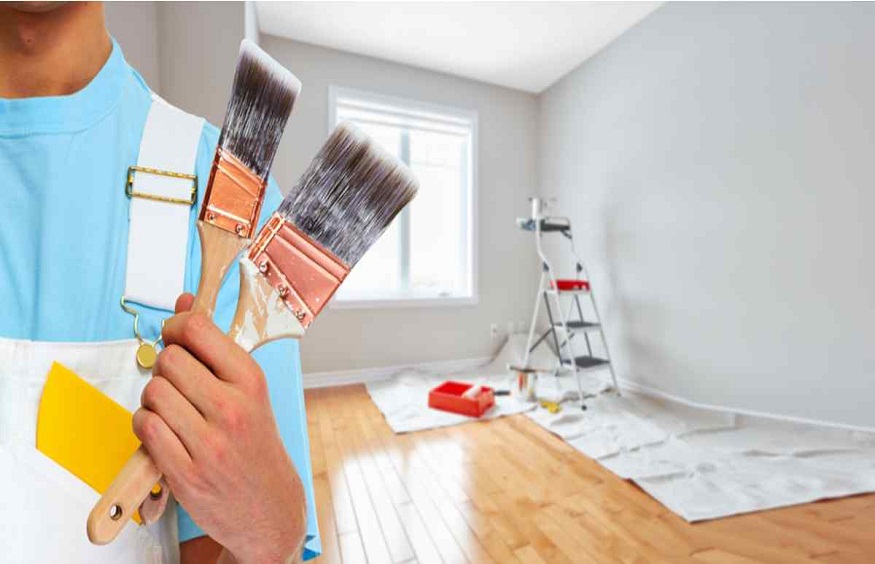Painting your home is an exciting task, but it can become expensive easily if not planned well. Fortunately, there are some ways of managing home painting costs without having to sacrifice quality. Smart budgeting and the right tools and techniques are all great means to achieve a great transformation without breaking the bank. Let’s look at some practical tips to guide you on how to save on house painting costs while achieving the look that you want.
Advanced Planning and Preparations
Saving on painting costs lies in proper planning. If you take over a project hastily it can cause unnecessary expense. Take your time to plan every detail from your budget to get an accurate measurement of your walls.
1.1 Set a Budget
Before you even start painting, determine how much you would like to spend. Having a budget will save you from overspending and help you make the proper choices in picking the kind of paint, tools, and services. A clear budget will also let you know your home painting cost right from the very beginning.
1.2 Measure the Area Accurately
Probably the most obvious failure you can face when it comes to painting is under or over-calculation of how much paint you will need. Measure your walls carefully to determine the total area of the painting. Once you know the exact measurements, your overall price for interior painting or exterior expenses will be cut down drastically.
1.3 Timing
Painting contractors often offer discounts during the off-season. Painting during lighter seasons such as late winter or early spring can also save you money on exterior home painting costs. In those periods, sellers are more willing to negotiate on the price or offer bundle deals.
2. Suitable Type of Paint
Choosing the right paint not only affects the overall look of your home but can also impact the cost.
2.1 Quality Over Quantity
Although cheaper paint may seem tempting, low-quality paints usually require more coats, adding labour costs and paint quantities. It’s better to invest in good-quality paint that will require fewer coats, as it saves you on material and labour and will keep your home painting cost in control.
2.2 Multipurpose Paints
Multipurpose paints can be used for walls and ceilings, so you can save money on the purchase of paints for the ceiling alone. These all-in-one solutions will also help to cut down the time you need for the entire project, which can minimize labour costs.
2.3 Eco-Friendly and Low-VOC Paints
Although green paints are a bit more expensive at the start, they last much longer and contain no volatile organic compounds. This results in less frequency of applying coats and less requirement of having expensive ventilation systems during painting, which contributes to a lower cost for painting interiors.
3. Use a Professional for Critical Areas
Though DIY painting saves a lot of money, some areas are an exception and require professional help.
3.1 Hire Professionals for Complicated Areas
For small complex spaces like houses with higher ceilings, exterior walls, or lots of detail in them, seek professional help. This raises the exterior home painting cost, but at the same time, guarantees that the task will be completed properly and for longer periods, unlike frequent repainting.
3.2 Negotiate the Service Cost
Do not be afraid to negotiate with contractors. Many firms are flexible with price, especially if you’re painting several rooms or if it’s not peak season. This could help with lowering your total home painting cost.
4. Select Efficient Tools and Techniques
Using the right tools and techniques can make you paint faster and more economical.
4.1 Apply Primer
A primer makes a significant difference. While primers help improve the bonding of the paint to surfaces, they require fewer coats with lesser labour and material costs.
4.2 Spray Painting Large Areas
For large areas, such as exterior walls, spray painting may be more convenient and less time-consuming than any other technique. The spray painting technique will save you labour time and reduce the exterior painting costs on larger projects.
5. Choose Colors and Finishes Carefully
The colour and finish you choose also determine your cost to paint.
5.1 Light vs. Darker Colors
Light colours usually mean one or two coats will suffice, whereas darker colours can require multiple coats consequently saving more paint and labour.
5.2 Matte or Satin Finish
High-gloss finishes might appeal to the eye, but they attract imperfections easily, which means more prep work is required. Use matte or satin finishes, which are easy on the painter and not too expensive. The same finishes also tend to call for fewer touch-ups in the longer run, which helps in bringing down your price for interior painting over time.
6. Conclusion
Saving on home painting costs doesn’t mean saving on quality. Planning, selecting the correct materials, and utilizing techniques without waste allow home painting to be a minimum expenditure yet an excellent result. Whether you do it yourself or hire professionals, these strategies will help you get the best value out of your money.

